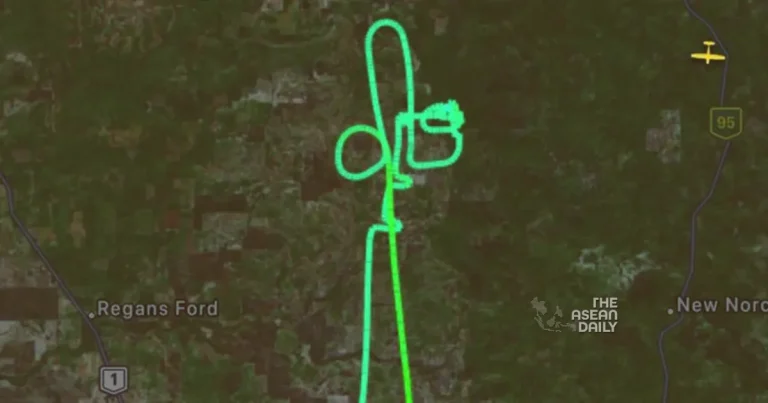2-10-2023 (SINGAPORE) A routine training flight conducted by the Republic of Singapore Air Force (RSAF) in Australia has garnered attention from British and Australian media due to the flight path’s intriguing resemblance to male anatomy. The aircraft, a Pilatus PC-21, took off from the Royal Australian Air Force’s (RAAF) Base Pearce in Western Australia on September 28. Flight tracking website Flightradar24 captured the flight’s trajectory, which some observers likened to an anatomical figure.
One Australian media outlet, Perth Now, humorously described the flight path as resembling “male genitalia in the sky” and reported that the Australian Department of Defence had referred the incident to the Singaporean Embassy for comment.
The RSAF responded to the online reports on October 1 by posting a statement on Facebook. The RSAF explained that its training flights are designed around “professional training objectives,” focusing on fundamental aircraft handling maneuvers, such as turns, instrument approaches, and circuit patterns. It emphasized that any similarity between the aircraft’s flight patterns and specific images was purely coincidental.
In a playful twist, the RSAF suggested that the flight path resembled Clippy, the iconic Microsoft Office paperclip mascot.
The RSAF conducts pilot training at the Royal Australian Air Force Base Pearce, home to the Flying Training Institute (FTI) Detachment, where aspiring RSAF pilots receive instruction. The RSAF’s 130 Squadron operates at this location, along with the squadron’s trainer aircraft.
Singapore established its presence at the air base through a Memorandum of Understanding (MOU) with Australia in 1993, allowing RSAF to operate the Flying Training Institute. In 2018, the MOU was renewed and elevated to a treaty, extending the RSAF’s training at Pearce for an additional 25 years.
The Pilatus PC-21 aircraft involved in the flight is essential for building a strong foundation in flying fundamentals for pilot trainees. This allows the RSAF to effectively assess trainee performance, ensuring that they are appropriately directed to various other training phases on different aircraft platforms.




